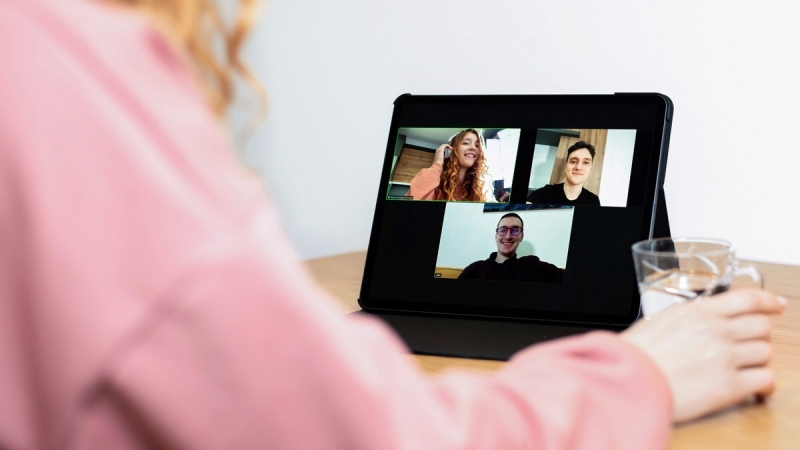
Background choice affects video call quality/frimufilms
Using video or moving backgrounds during Zoom calls can increase mental and physical fatigue during virtual meetings. This is evidenced by the results of the study.
Scientists explain this by the fact that, unlike still images or a blurred background, the video background constantly presents new information that requires a person's attention and mental effort. This is written by the publication Standart.
According to them, this, in turn, can lead to “zooming fatigue” – a form of physical and mental exhaustion that results from frequent video conferencing. However, the videophone constantly introduces new information, constantly interrupting users' attention and demanding cognitive resources.
The results of the study, published in the journal Frontiers in Psychology, suggest that people who use natural or serene backgrounds report lower levels of fatigue after online meetings compared to those who use other types of virtual backgrounds or none at all.
Lead author of the study Heng Zhang, a researcher at the Wee Kim Wee School of Communication and Information at Nanyang Technological University in Singapore, notes: “Background images first create new opportunities for working on the Internet, and then for communication “.
Blurred backgrounds do not provide new information, but sometimes users can see a real environment that presents new information.
Instead, a video background continuously presents new information, constantly interrupting users' attention and requiring them to cognitively resources.
Previous research has shown that people spend a lot of time during video calls looking at themselves and analyzing how they look during meetings, which can lead to mental exhaustion.
200% Deposit Bonus up to €3,000 180% First Deposit Bonus up to $20,000For this study, researchers surveyed more than 600 workers aged 22 to 76 who worked from home about three days a week.
People were asked whether they used virtual backgrounds, and if so, whether they used static images, blurred images or video backgrounds.
A five-point scale was used to measure general, visual, social, motivational, and emotional fatigue. The team found that more than seven in 10 people used virtual backgrounds during video calls, with still images being the most popular choice.
- Among those who used still images, nature-themed images were the most popular, according they included photos of interiors and workplaces.
- A minority of people chose abstract images and light-hearted backgrounds, the researchers said.
- Those who used “funny” backgrounds, they said, reported about less fatigue from video calls than those who used natural backgrounds.
Researchers believe this may be because these types of Zoom backgrounds are not used to impress colleagues.

A still background is less distracting/Freepik photo
The authors write: “People who use them could care very little about how they appear against these backgrounds, or simply use them as a way to hide your real physical surroundings.”
The absence of stress associated with managing your image results in less video conferencing fatigue.
Mr. Zhang added: “Other backgrounds, such as office spaces or public places, can increase the pressure on users by forcing them to present themselves as if they are actually in one of these places, leading to increased fatigue.”
< p>In the working environment, an image on a natural theme can be an ideal choice.

